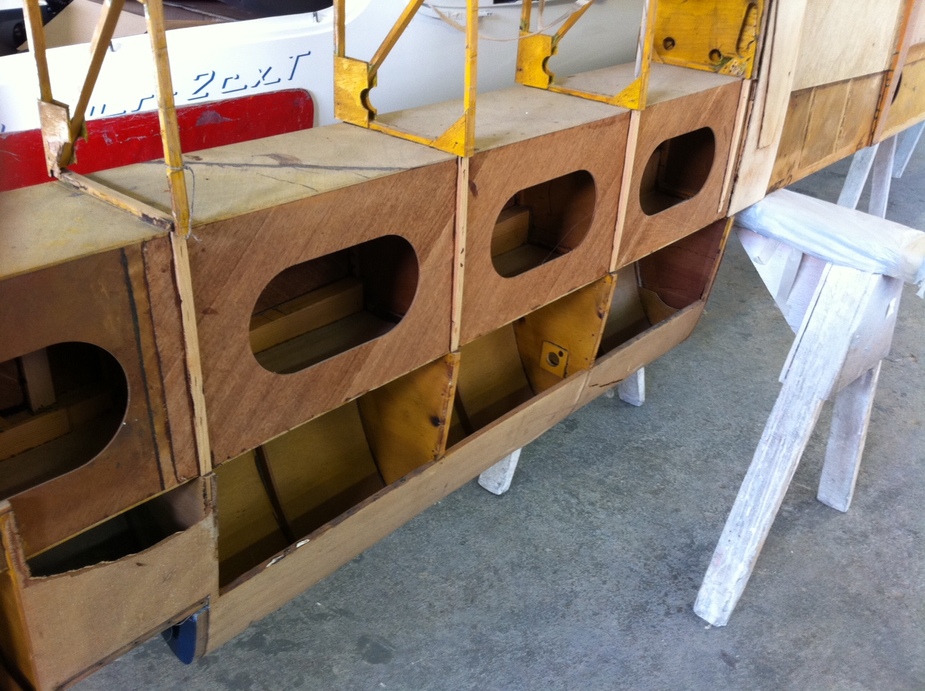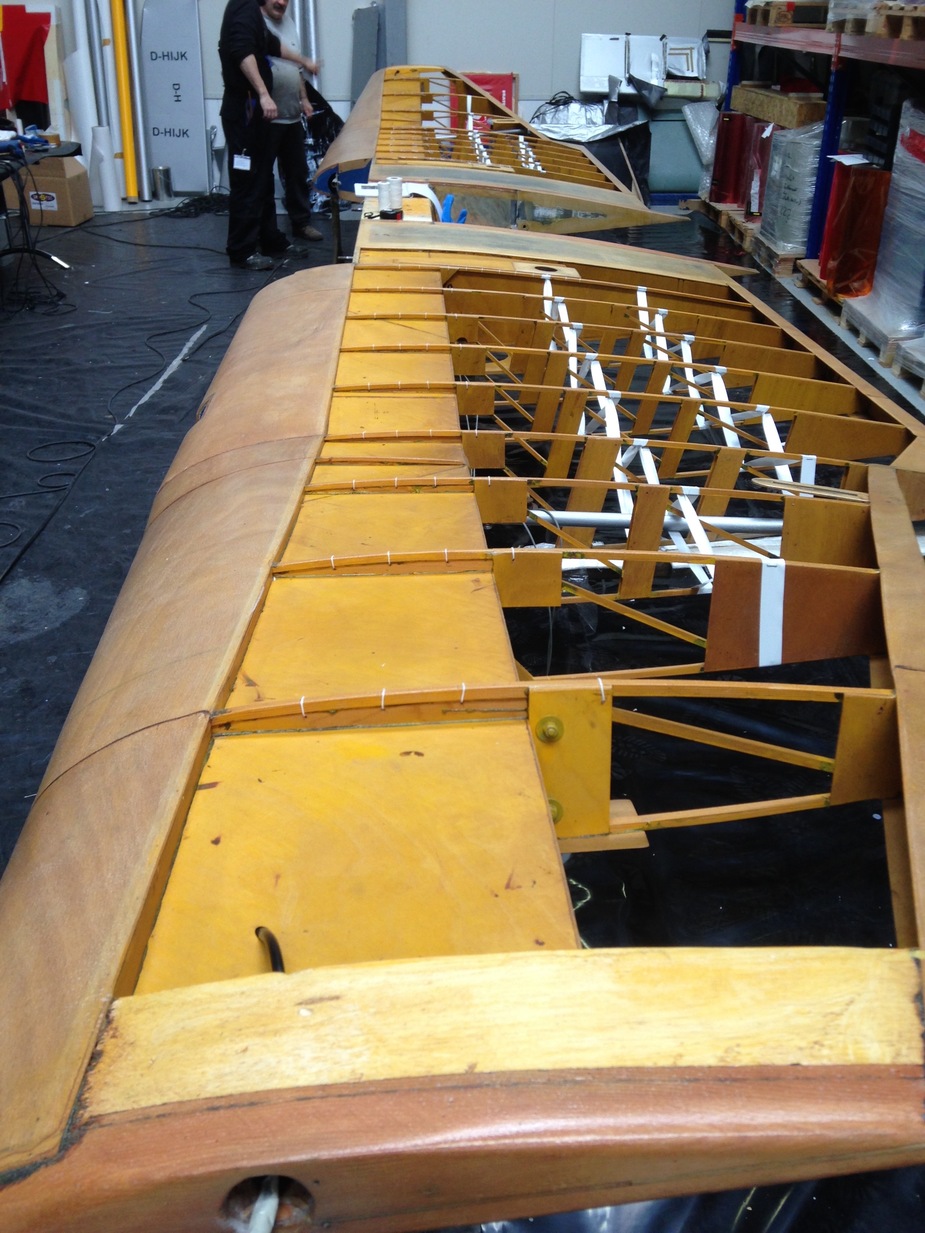A_and_C wrote:
As I understand it the spar issue was due to the assembly method employed
From the official report (I’m sorry I don’t have English translation at hand):
“1.16.3.2.1 Utilisation de la colle
La colle utilisée par la société Robin est la Penacolite G1131 fabriquée aux Etats-Unis par la société Koppers Company, Inc.
Le distributeur français de cette colle donne des directives précises d’utilisation quant à la méthode et aux conditions de température et d’hygrométrie exigées pour en obtenir l’efficacité attendue. En particulier, il mentionne explicitement un collage en double face, que le bois soit tendre ou dur. La température ambiante est également un facteur important lors de l’opération d’assemblage.
[…]
La société Robin, dans sa note n° NAV 76/3 du 26 février 1976, définit l’utilisation de la colle Penacolite G1131, laissant le choix de la méthode d’encollage sur une ou deux faces. D’autre part, le grammage prescrit (280g/m²) est nettement inférieur à celui qui a été appliqué aux essais en vue de la certification de la colle. La pression d’assemblage à appliquer serait de 1,7 à 17,5 kg/cm² pour la société Robin alors que la société distributrice de l’adhésif recommande une pression minimum de 7 à 17 kg/cm².
In a nutshell: Robin was not following “precise directions” issued by the glue manufacturer. 4 people are dead as direct result.
A_and_C wrote:
This issue has now been addressed with a change in assembly methods.
I would avoid any wooden aircraft which has not been glued according to the glue manufacturer’s directions
I am having trouble with translation of the above report but I seem to recall that the aircraft that had a structural failure was performing aerobics, something the Robin DR400 is not cleared for. The only other in flight structural failure was following a collision with an object on the ground before the flight in question. The U.K. AAIB remarked in the report that the construction of the aircraft was to a high standard.
I have seen a number of Robin Aircraft that pilots have dismantled in an unsympathetic way, this gives a unique insight into the construction methods and crashworthyness of the structures and it seems to me to be of the highest order. As remarked above the assembly of the aircraft should follow the glue manufacturers instructions, Robin did step outside this best practice for a while and the spar modification addressed any issues that might have resulted from less than optimum glueing techniques.
So the conclusion is that I would be more than happy to fly any Robin Aircraft as long as all the structural AD’s had been done.
While in the Robin DR400 subject do any of you out there have a copy of MT Propellers flight manual supplement E-435 for the DR400.
I am particularly interested in the cruse performance of the three blade CS propeller in question, most MT prop modifications for the DR400 are four blade units aimed at glider towing and noise abatement ( and therefore low speed climb performance) this three blade unit seems a little different and might give me the fuel flow advantages in the 60-70% power rangethat I am looking for along with the ability to move a big payload out of a short runway.
I have looked for this on the net but my internet search skills are not as good as some on this site.
A_and_C wrote:
I am having trouble with translation of the above report
This might help
A_and_C wrote:
aircraft that had a structural failure was performing aerobics,
This hypothesis has been officially ruled out. Kindly have a look at the accident report I’m referring to.
A_and_C wrote:
Robin did step outside this best practice
That’s an euphemism, to say the least
A_and_C wrote:
for a while+20 years to be a little bit more precise
A_and_C wrote:
the spar modification addressed any issues
Well, I certainly wouldn’t say so. The aim of the AD is to prevent the affected airframes from falling from the sky. Period. Wing spar is inspected and repaired but all other elements are not.
I fail to see what other elliments are to be addressed , the problem with the Aircraft was the bonding of the spar structure in that the glue might not meet the strength required. To prove this the wing structure would have to be dismantled ( likely to involve destruction of the structure.
The fix was to glue extra structure into the spar web to garentee that there would be sufficient glued area to meet the design strength.
The solution is not in engineering terms very eligent but it does the job.
The new structure can be seen in the spar web.
Thanks for posting the picture. @Regent has the full picture now.
I’m not gonna debate you, there is no point.
As your question about the E-435 is concerned, I did have a good look here and there but unfortunately I didn’t find the flight manual supplement.
In general I would say that IMHO a two blade propeller would be the best solution for O360 in terms of efficiency and weight.
Thanks for looking, the aim with the prop change is efficiency in the cruise with good take off & climb performance.
I don’t see the aircraft getting a better top speed but the target is to be able to cruise at a lower RPM and save some fuel.
There area number of props approved under German modifications that have grandfather rights under EASA and I’m getting the feeling that MT have forgotten what they have had approved in the past.
Thats true, MT does not know about the MTV-18 which is also an option. You will find this one mentioned in the LBA type certificate where it is in the approved propeller listing.
@Robin_253, and all the others, thanks für completing my picture. For sure i would prefer to get a plane without the spar issue, but this is a question of availability…So again, if anyone knows where to find one i would be happy to hear 
My aircraft is equipped with a fixed pitch Sensenich prop and I can easily take off from 500 m grass strips at MTOW (1100kg), zero wind and temp ca +22-25 C. VP prop would improve take off performance, not question about that but I hardly need it. In cruise, there is no noticeable performance difference between FP Sensenich and VP Hartzel. Hartzell has slightly shorter blades which probably make it less efficient.
Last but not least: from inception Jodels were engineered with fixed pitch props and fixed gear. O360 can give you only so much power and so much performance. If you want more speed, then get yourself a Bonanza 
@Regent, the last piece of advice I can give you is that buying a second hand wooden airplane is like buying a piece of art. You need to be patient and careful because there are lots of neglected airframes with fresh paint sprayed on top of them, cleaned upholstery and polished glare shield. A well cared for wooden structure should look like new:

I concur that 500m at MAUW is perfectly doable in experienced hands with a 2 blade Sensenich on a 180hp Lycoming.
We often achieved that and would then go on to cruise at 2500ft, 2500rpm (our tach green arc was 2400 to 2700) burning around 38lts/hr 120kts ias.
At 105 kts (flying with 172’s or cherokee’s)
Fuel burn was hugely reduced.